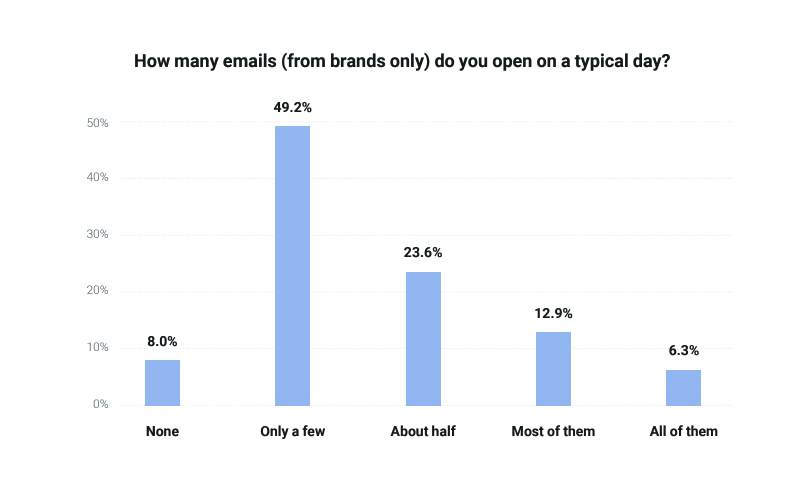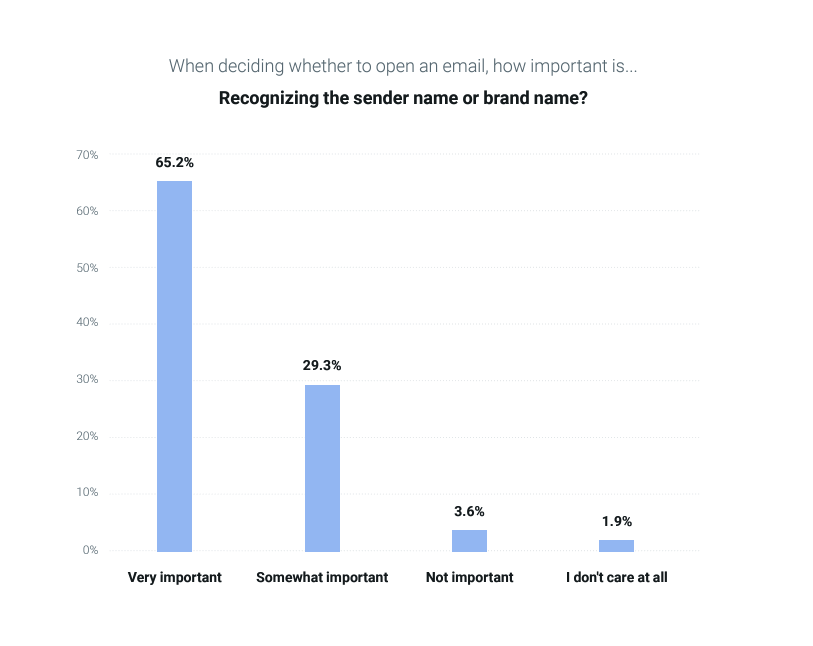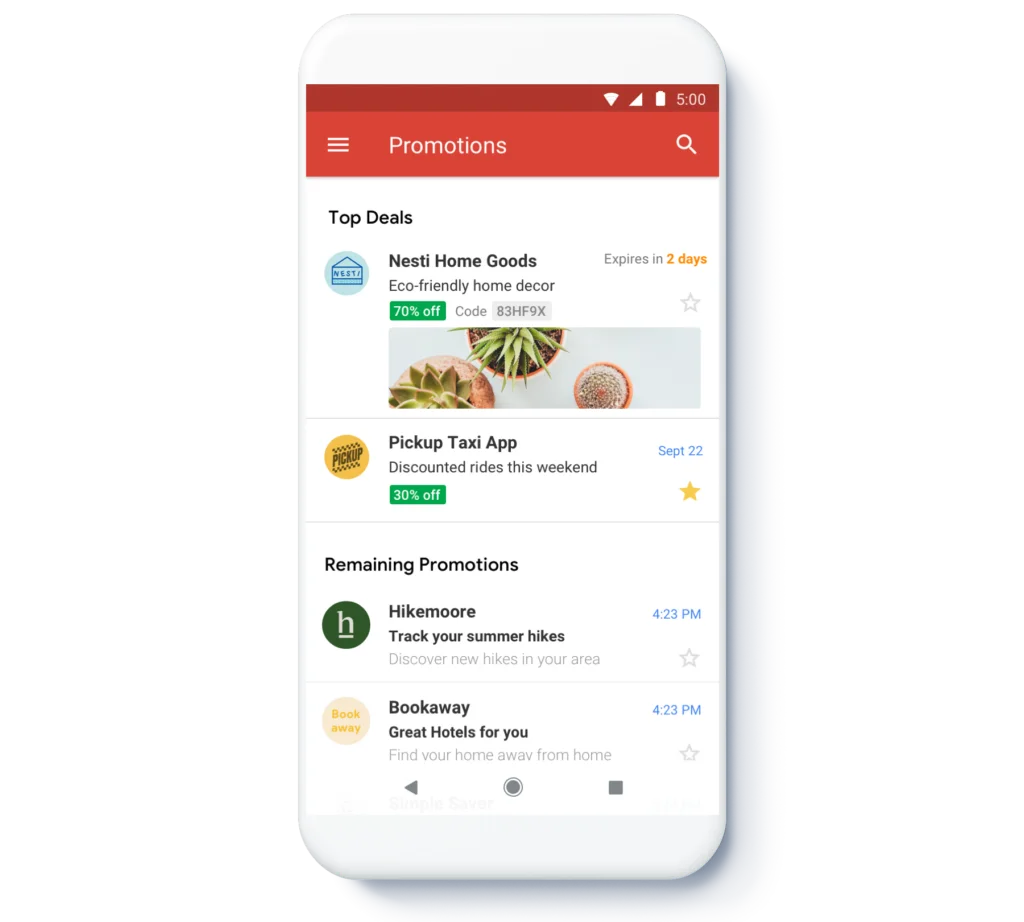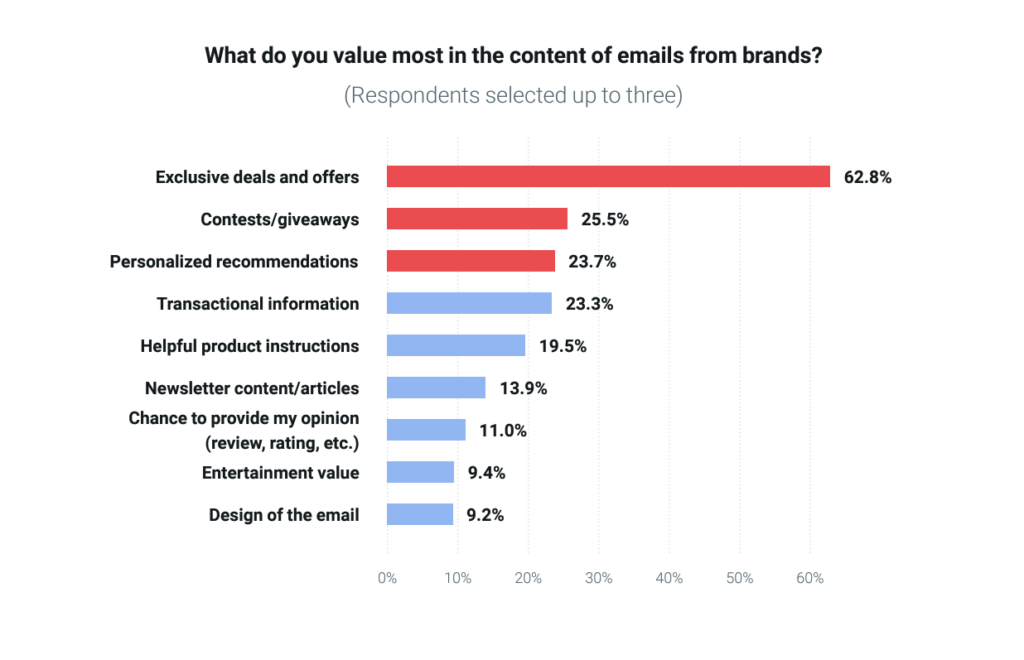Beat the Average Email Open Rate with These Strategic Tips


Email marketers obsess over increasing their open rates, and for good reason.
If a tree falls in a forest and no one hears it…
The same is true for your email campaigns. Your open rate is the leading indicator of overall email engagement. Without an open, you can’t get a click, or page views, or conversions and sales to attribute to the email channel.
So here’s the all-too-familiar problem: Today’s inboxes are more crowded than ever. In a recent survey about email and the customer experience from Sinch Mailgun, we learned that almost half of consumers say they only open a few emails a day from brands. That’s despite the overwhelming majority (75%) telling us they prefer to receive brand messages via email.

So, what makes your messages open-worthy? How can you do better than the average email open rate? Here’s what you need to know…
Email open rates give you a percentage based on the number of messages that are delivered – to the inbox or to spam. To calculate your email open rate, divide the total number of emails opened by the number delivered, minus the number of bounces you receive. (Emails that bounce or get rejected aren’t part of this calculation.)
Email open rate = (Emails opened / Emails delivered) X 100
It’s a pretty simple equation: If you deliver 1,000 emails successfully and emails are opened 200 times, you have a 20% open rate.
Keep in mind, though, open rates are not always 100% accurate. They can include multiple opens from the same subscriber, for example. And any subscribers using Apple Mail may have Mail Privacy Protection (MPP) turned on. This pre-loads email images, causing the tracking pixel to fire before a human recipient opens the message. As a result, email open rates and some other metrics may become inflated or inaccurate.
That doesn’t mean email open rates are not useful. It’s still an important metric to track the success of your email marketing program. But you’ll want to take your results in context of these other metrics:
This metric provides a more accurate count of the number of subscribers who open an email. While the overall open rate percentage includes multiple opens from individual subscribers, the unique open rate only counts it once. So, if someone opens a campaign several times, it is only calculated once for the unique open rate.
Opening emails multiple times isn’t a bad thing. However, the overall open rate is more of an engagement metric than a strict count of email opens.
This metric quantifies the percentage of your list that was reached over a series of emails. Let’s say you send three different emails to promote a new product and each has an open rate of 20%. Perhaps you only reached 20% of your total audience three times each. But if every email was opened by a different 20% of your list, you actually engaged 60% of your total list one time each. Open reach rate measures the percentage of unique people engaged.
The click-through rate is calculated by dividing the number of clicks on your email content by the total number of emails delivered. So again, if 1000 emails are sent and 30 people open and click somewhere on the email, that’s a 3% CTR.
This is one of the email marketer’s favorite metrics. The click-to-open rate is in many ways more helpful than the CTR or open rate alone. It tells you how many people who actually opened an email also clicked on it. Using our previous examples, the CTOR would be 15%, because out of 200 opens, 30 people clicked.
The CTOR metric is a good way to measure how effective and engaging your content is. The subscribers who didn’t open the email never saw what you sent.
Ah, the age-old question. Either you want to know, or someone in your organization does. But comparing your email performance to the average isn’t always a smart idea.
Overall average open rates aren’t enormously useful because every email list is unique. However, if you tally up what some of the popular ESPs report, you’ll find the average email open rate comes in between 20% and 30%. That number depends on a variety of factors, like B2B vs. B2C, retail vs. hospitality, and more.
More importantly, comparing your open rate against an industry benchmark isn’t as helpful as improving the metric from where it is now. Focus on competing against your own email marketing metrics.
So, what gets subscribers to actually open your email? Sinch Mailgun explored this question in the report, Email and the customer experience. It turns out brand reputation may be just as crucial as your copywriting.
Compelling subject lines from smart email marketers in your organization are important. But other factors come into play when deciding whether opening an email is worth a person’s time.
In fact, 94.5% of consumers said recognizing the sender’s name or brand name is at least somewhat important. When it came to opening an email, nearly two-thirds (65.2%) said that familiarity was “Very important.”

This means you should think about your “From name” as well as your subject line. Will you send the email from a person at the company? Do you have different from for different product lines or brands within the larger company? Is your sender name too long for certain mailbox providers?
Recognizing the brand is important to email recipients because it’s a signal that the message is from a company they know and trust. That’s why Gmail and Yahoo’s new sender guidelines focus so much on email authentication. Speaking of email authentication protocols… Another way to showcase that recognizability is with an inbox logo, which is possible when senders implement BIMI (Brand Indicators for Message Identification).
Understanding your email open rate isn’t just important for email engagement metrics. Your open rates impact your deliverability and inbox placement, too.
The less subscribers who open your emails, the more likely you’ll (eventually) be filtered into spam. Low open rates are a signal to mailbox providers that their users don’t want your emails. That turns into a poor sender reputation, blocked or filtered emails, and even lower open rates.
An unexpected dip in open rates may also indicate deliverability issues. If your emails suddenly aren’t getting opened, it could mean more of them are landing in spam.
If you do have low email open rates, list hygiene and segmentation can help. For example, you could try sending a re-engagement email to unengaged subscribers or do a little cleanup to remove any subscribers who haven’t opened anything in six months or more.
No matter where your average open rate sits, there are many tactics you can use to increase email opens. Here are eight strategies to consider:
Got a couple of ideas for a good subject line but you’re unsure which one would boost email open rates? A/B test it. Subject lines are one of the most important and impactful things to split test in email marketing.
Doing just one or two random split tests now and then isn’t always useful. You need a methodology that is used consistently and delivers data and results over time. That way, you’ll understand the kinds of subject line strategies your list responds to.
Some email marketing software also lets you test subject lines by slowly sending them to a portion of your list. When it becomes clear which one is going to perform better, the winning subject line is automatically sent to everyone else on the list.
When most people think about personalization, they imagine using the subscriber’s first name. Like emojis or other subject line strategies, putting the person’s first name in the subject is just one tool at your disposal. Use it too often, and its effectiveness dies a slow death. Many consumers are used to this tactic, and it just doesn’t impress them as much anymore.
Email personalization is really about customizing the content based on what you know about the subscriber, which is often much more than their name. Try personalizing emails based on:
What people expect to find inside your emails matters a lot. When we asked consumers about email content that is personalized to their interests, a combined 80.8% said it was either somewhat or very important when it came to opening the email. The more personalized you can make the subject lines and email content, the more likely your subscribers will want to open your campaigns.
Emojis can be a way to stand out in a crowded inbox. They add a pop of color, emotion, or added meaning, depending on how you’re using them. Because a pictures is worth a thousand words, emojis are an easy way to evoke an emotion or quickly get a point across. And email marketers already use emojis all the time:

Just make sure when you choose one, you know exactly what it means (otherwise your subject line may be a bit more, ahem, cheeky 🍑 than you intend).
Just as you take time writing subject lines, do the same with preheader text, which is also called preview text. Preheader text is the copy that appears directly below or to the right of the subject line, depending on which device the subscriber is using. Here’s the thing: If you don’t write preheader text, the device will find somewhere else to pull that text from, and it could be a totally random experience for your subscriber.

Instead of leaving it up to chance, make the subject line and the preheader complementary to each other. If the subject asks a question, the preheader could begin to answer it. If the subject makes a promise, the preheader should suggest the fulfillment of that promise or give a reason why that promise matters. If the subject mentions a sale, the preheader could mention additional details. You’ve got that much more room to get subscribers to open and email, so use it.
For years, email marketers were convinced that you had to send emails on Wednesdays. And then it was Fridays. While the “best time” to send an email keeps changing, what’s also important is to test out your email performance by time of day.
The right send time varies depending on the recipient. While Mailgun’s report found many consumers check email in the morning, the results were spread out across the day. If you have a global audience, one way to optimize for email opens is by segmenting your list based on time zones.
With advanced features like send time optimization, you can take things even further. This essentially personalizes when an email gets sent to a recipient using first-party data that indicates a time they’re most likely to open a message (based on past engagement data).
You may assume that having email campaigns land in Gmail’s Promotions tab instead of the main inbox tab would hurt your open rates. That’s not necessarily true. While marketers initially lamented placement in Promotions, there are some serious advantages.
First, it automatically organizes promotional emails in a place where your subscribers can easily find them. If people subscribed because they want to hear about your promotions, then they’ll look for your latest deals there. In fact, the Email and the customer experience report found that more than 50% of consumers say they check the Promotions tab daily.
Bulk senders can also deliver a unique experience to the Promotions tab using schema markup to highlight things like coupon codes, expiration dates, product images, and more. This all happens at the inbox level before the email is opened. See how that could boost email open rates?

If subscribers open promotional emails from you regularly, you’ll even be featured in the Top Deals section of the Promotions tab, which could also lead to more opens.
Here’s a super easy way to increase email open rate… Get rid of the subscribers who don’t open your emails. They’re dead weight, and that’s dragging down your engagement metrics, which hurts your sender reputation.
It’s never a bad time to do a little email list hygiene. Unengaged subscribers and invalid addresses drag down your open rates and impact your deliverability. Take a look at your current subscribers and segment them based on opens to look for patterns.
With strategic segmentation based on engagement, you can send more frequently to contacts who are more likely to open your emails. Conversely, you’ll send less often to unengaged subscribers, which helps boost your overall email open rate.
You basically have two options to add subscribers to your list: Single opt-in or double opt-in.
Single opt-in occurs when someone gets added to your list immediately after filling out a form. Double opt-in includes an additional step – a confirmation email that the new subscriber must open and click before they’re added. This improves the chances that new contacts truly want to hear from you and are likely to open future emails.
Here’s an example of a double opt-in confirmation message featured on Really Good Emails:

There is one other way to handle the double opt-in. It’s sometimes called confirmed opt-in lite or COIL. With this process, new subscribers are automatically segmented to a separate list until they show signs they’re going to engage. These contacts receive fewer emails at first and can be moved to your main list later on.
The most effective way to get consistent email opens from your subscribers? Send great emails. Yup, there’s no real shortcut, even if you follow the tips above. The key to getting good email open rates is that you want your subscribers to be anticipating what you send.
When we asked survey participants to select up to three factors that they value most about the emails they receive from brands, the top choices represented benefits to their experience as consumers:

The more relevant, interesting, and exciting your emails are, the more likely you’ll get an open in the future. That’s because sending high quality emails makes people anticipate what they’ll get from you next – and that’s the best way to get opens.
Sinch Email on Acid is here to help optimize your marketing emails for opens and much more.
You can use the platform’s Inbox Display feature to check out how your subject line will look once emails reach inboxes. This helps you see, for example, if your subject line is getting cut off on mobile devices. It also lets you see how your “From” name, subject line, and pre-header text look together.
Email on Acid’s Email Previews show you how your emails render on more than 100 different clients and devices. That’s important – because consumers will stop opening your emails if they show up looking like a hot mess.
Sinch Email on Acid is built for email quality assurance. With unlimited email testing on every paid plan, you’ll be able to optimize and improve code and designs until you’re completely satisfied. Give us a try and start putting your best email forward.